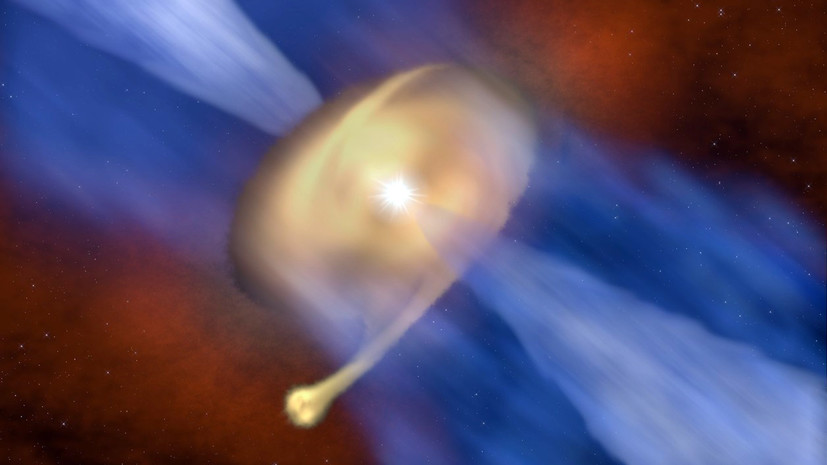Double stars are called systems of two gravitationally related luminaries. These are fairly common objects in the universe, but the process of their formation has remained unclear until now.
An international group of scientists led by astrophysicists from the University of Leeds (UK) described an unusual case - the birth of a star in the protoplanetary disk of another star.
An amazing discovery, scientists have made by chance. Astronomers watched a young massive MM 1a star surrounded by a dust and gas disk. Having received a detailed snapshot of MM 1a, the researchers noticed a satellite in its orbit, in which they recognized another star.
The described case, according to experts, is unique. Stars usually grow in "cocoons" of dust and gas, under the action of gravity, this "cocoon" gradually collapses and turns into a dense gas-dust disk from which planets are formed. However, the MM 1a disk was so massive that instead of the planets, another star was born in it - MM 1b. Astrophysicists calculated the mass of two space objects. MM 1a weighs 40 times the size of the Sun, and MM 1b is twice as lighter than our light.
“Many old massive stars are in binary systems. However, the mass of such luminaries is almost always the same. The discovery of a young double star with an 80: 1 mass ratio is a very unusual phenomenon, ”said study author John Ailee.
In the course of observing the cosmic phenomenon, the researchers managed to prove a hypothesis with a so-called intermediate disk. According to this theory, the formation of the second star in the system of binary stars takes place in the cold massive disk of the first star. Under the influence of its own gravity, the disk collapses into several fragments, in the largest of which another star may form. This is exactly what happened in the case of MM 1b, which was born in one of the fragments of the former gas-dust envelope MM 1a.
At the same time, astrophysicists did not rule out that MM 1b may be surrounded by its own protoplanetary disk.
“So massive stars like MM 1a live only for about a million years, and then explode like supernovae. Therefore, even if MM 1b will have time to acquire its own planetary system, this system will not survive for a long time, ”said Aili.
The researchers were able to make the discovery with the help of the ALMA radio telescope complex located in the Chilean Atacama desert. In 2019, astrophysicists will continue to observe the fate of binary stars.

